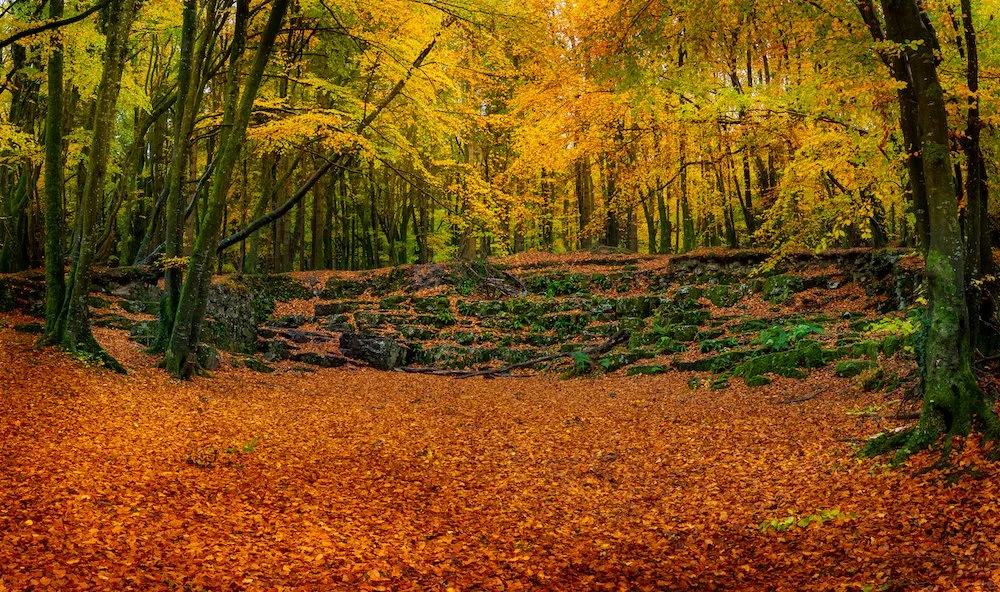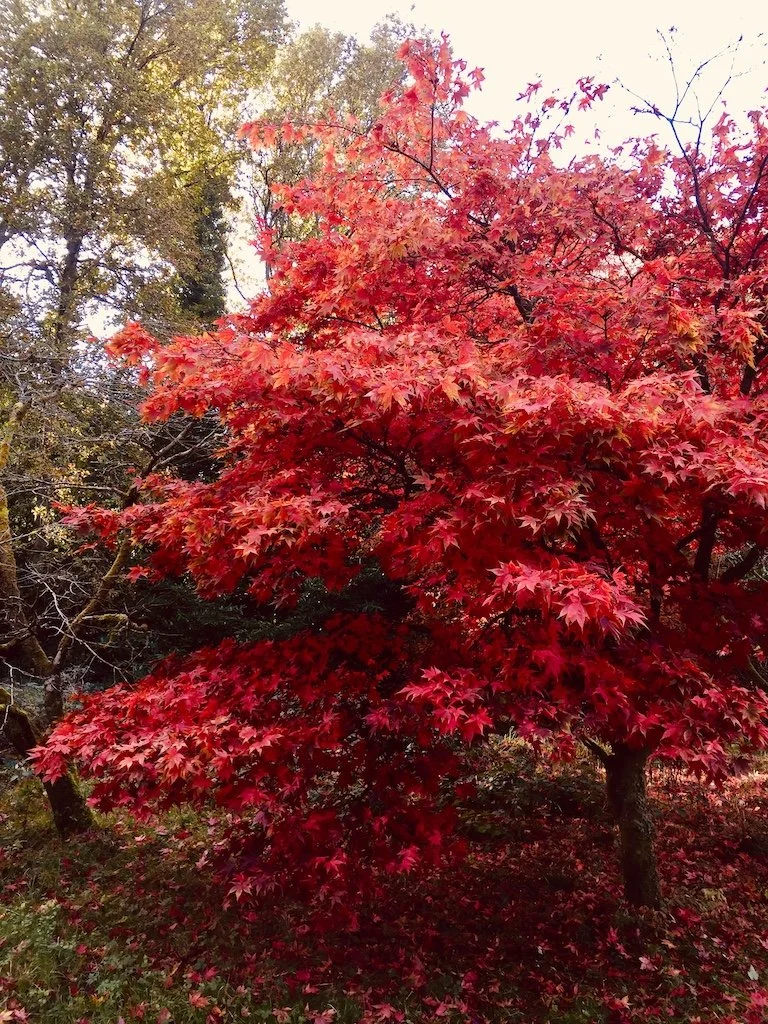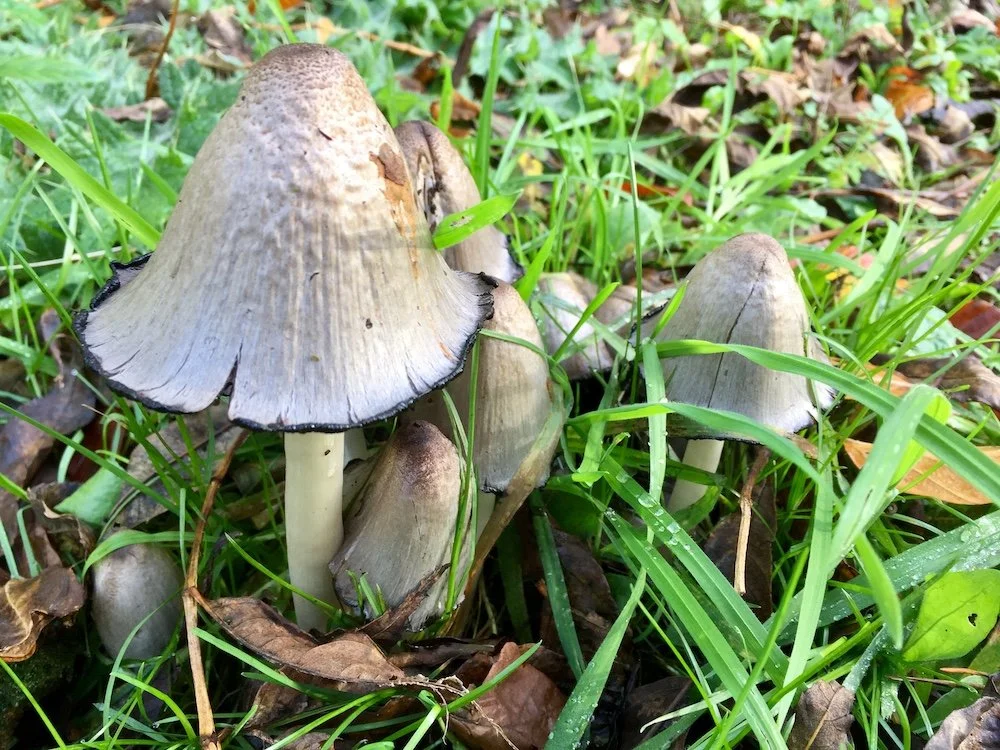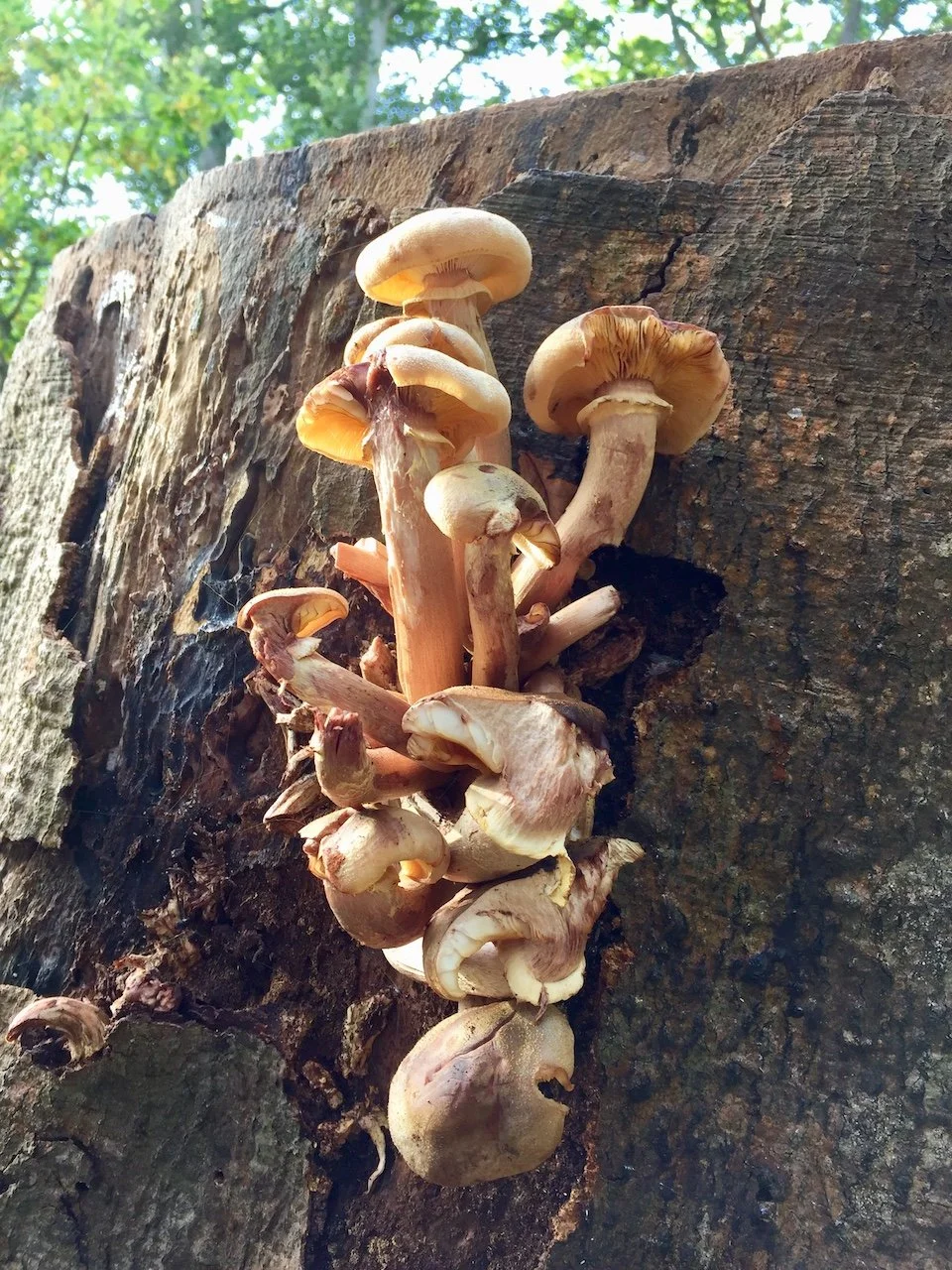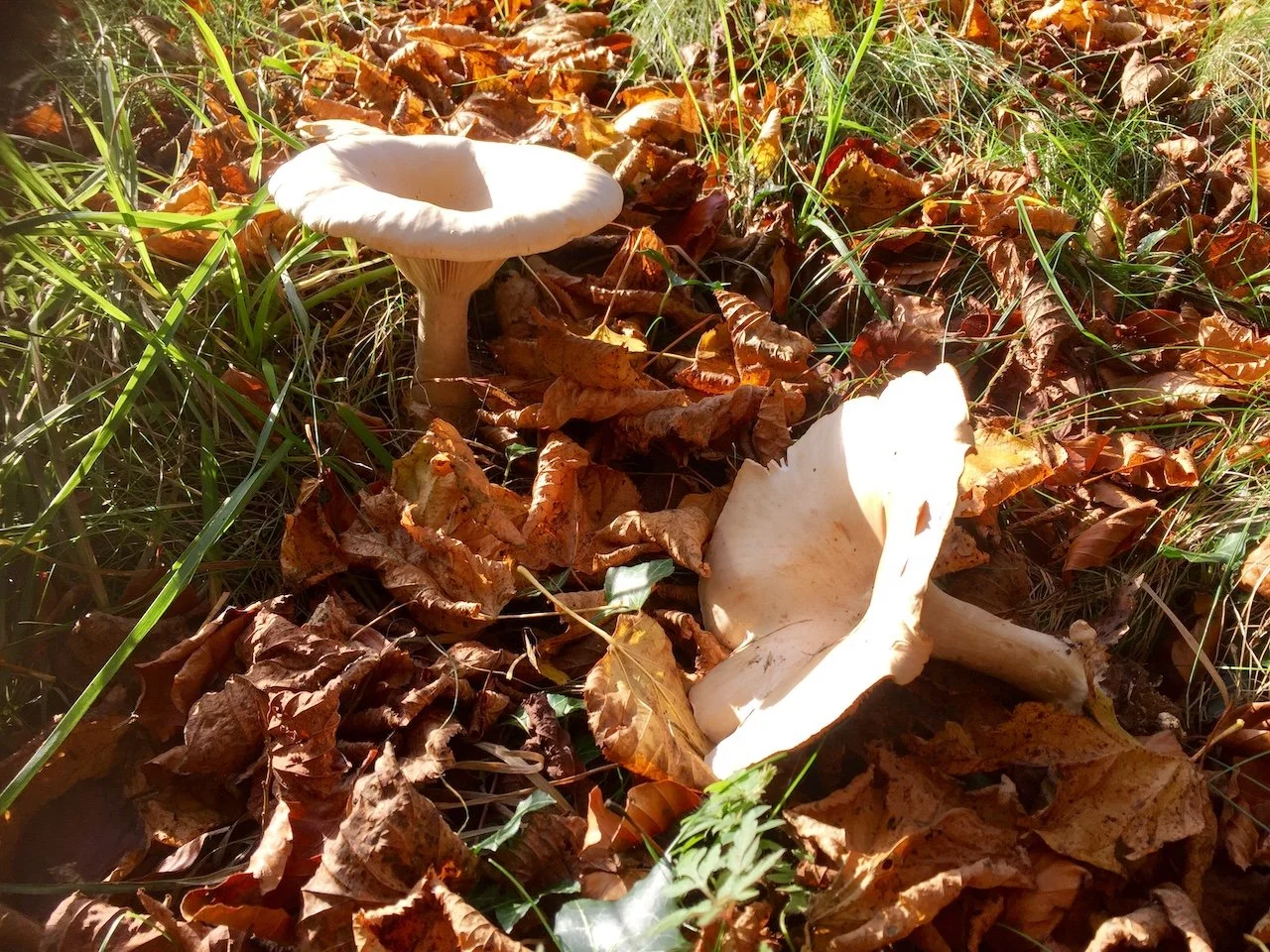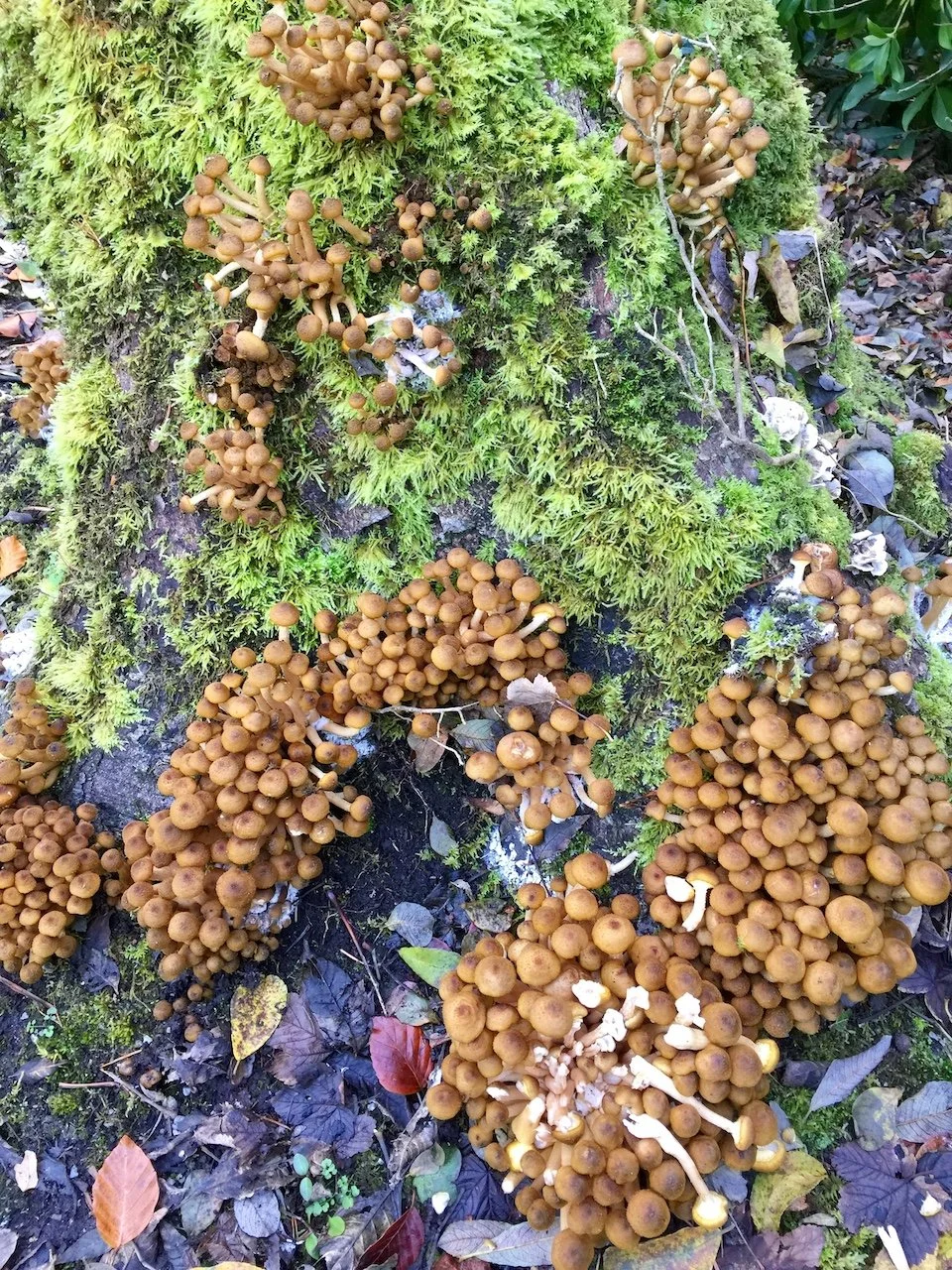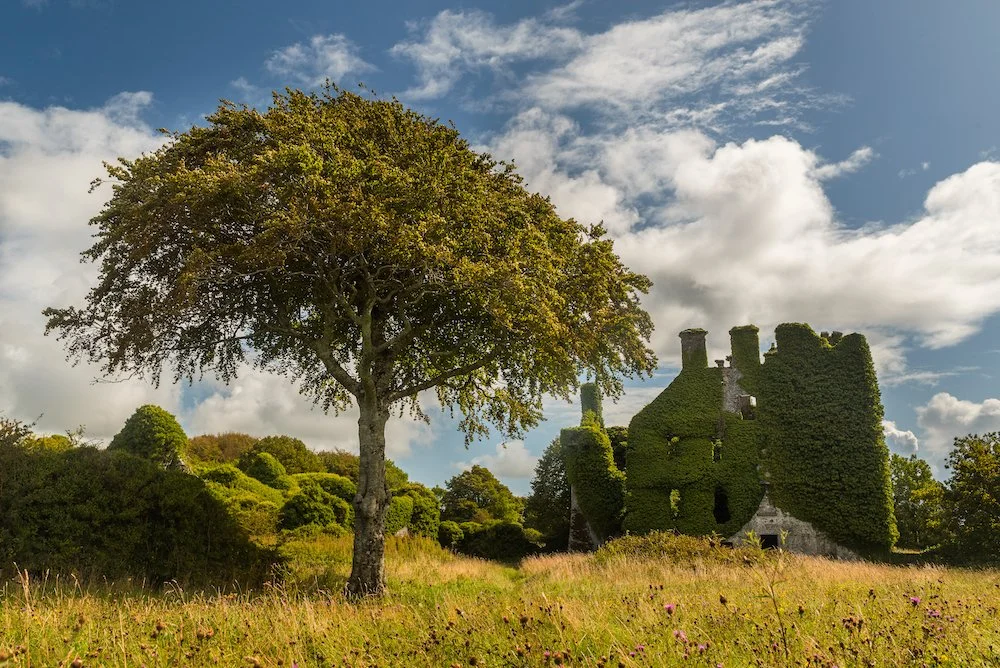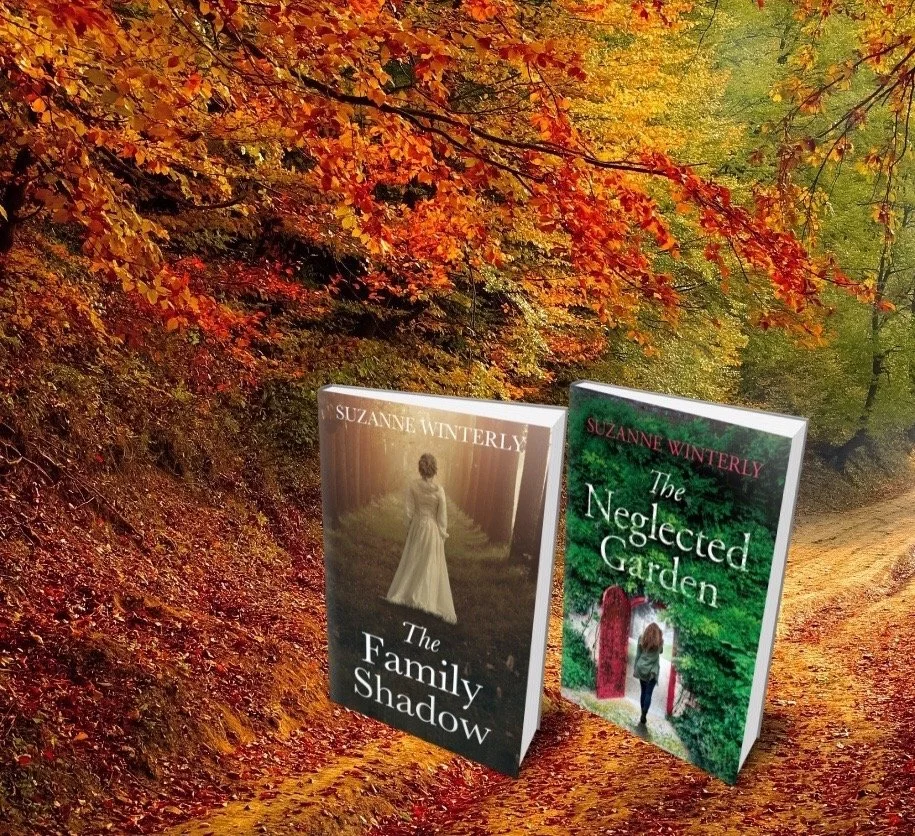An autumn walk in Bushy Park, Dublin (Photo: Anne Butler)
What time of year do you like? I’m a summer person really. I love the early summer months of May and June best but autumn is the season that comes a close second. Walking in an autumn like the one we’ve just had, with bright blue skies and unusually warm dry weather for Ireland, I find uplifting and inspiring. Read on for a celebration of autumn leaves, deadly poisonous fungi and a tragic family story in Menlo Castle in Galway.
Autumn walks in Bushy Park, Dublin
Anne, a friend from college days who now lives in Barcelona, took these photos of Bushy Park in Dublin when she was back home in the early autumn. Bushy Park is on the Southside of Dublin city and has scenic walks along the River Dodder, beautiful native trees and a duck pond. The park dates back to 1700 when it formed part of a private dwelling called Bushes House on four hectares. It was given away as a daughter’s dowry when she married into the Shaw family in 1796 - distant relations of George Bernard Shaw apparently. The park is now run by Dublin City Council and open to the public.
The Dodder River in Bushy Park Dublin in autumn (Photo: Anne Butler)
Emo Court, Co Laois where the beech woods are inspiring places to walk (Photo: Shutterstock)
A vibrant autumn walk in Emo Court in Co Laois
Autumn came late this year, with trees clinging onto green leaves well into October. We’ve also had few gales so the golden and yellow colours, when they finally arrived, were glorious. A couple of weeks ago, we took a stroll in Emo Court, an eighteenth century mansion now owned by the State and well-maintained by the Office of Public Works and I took these photographs there.
Emo was designed by the famous architect James Gandon for the Earl of Portarlington and work began on building the house around the 1790s. Gandon’s biggest projects were the Four Courts in Dublin and the Customs House on the edge of the River Liffey. The lake at Emo inspired the one in my first novel The Neglected Garden.
Japanese Maple in Emo Court, County Laois (Photo: Suzanne Winterly)
A good autumn for fungi in Ireland
One thing I have noticed this autumn is the abundance of fungi, which is proving useful with research for my latest mystery novel. Inkcaps have sprung up in our fields and I’ve discovered that there are two types growing here. One is the ‘Shaggy Inkcap’ or ‘Lawyer’s Wig’ which is apparently edible when young. It has a woolly surface with a bell-like shape. Please don’t eat it without consulting an expert!
Inkcaps get their name because, as they age, they begin to melt away until there is only a black puddle. I learned if you leave an Inkcap in a kitchen overnight, there will be nothing left in the morning but liquid. I haven’t tried this myself so I can’t guarantee it’s true. Back in the past, the dark liquid was mixed with water or (rather disgustingly!) urine and used as ink.
The fungi ‘Inkcap’ growing in Emo Court (Photo: Suzanne Winterly)
The more poisonous mushrooms
The other Inkcap is known as the ‘Common Inkcap’ or ‘Tippler’s Bane’ and is extremely poisonous when consumed with alcohol. It has the similar bell shape of the Shaggy Inkcap but is smooth. It also melts away as it grows older. It grows in woodlands and not out on your lawn or in fields. I’m not going to risk eating either of these Inkcaps.
I’ve discovered that the most poisonous of mushrooms or fungi in Ireland have tell-tale names: there’s the ‘Death Cap’, which is greenish and smooth with a sickly sweet smell. Symptoms of liver failure set in after six weeks of consumption and prove fatal. There’s the ‘Panther Cap’, which is medium brown with white spots; is found in woodlands; causes hallucinations and it can be fatal. ‘The Destroying Angel’ is another to avoid and, like the name suggests, it looks innocent and white but is similar to the ‘Death Cap’ with a sickly sweet smell. This ‘angel’ is deadly poisonous.
Fungi growing on a tree trunk in Emo Court. I have no idea what this one is. (Photo: Suzanne Winterly)
Fungi growing in autumn leaves in Emo Court, Ireland (Photo: Suzanne Winterly)
A small type of fungi growing on a tree stump in Emo Court, Ireland (Photo: Suzanne Winterly)
A tragedy at Menlo Castle in County Galway
I’ve been researching more ruins in Ireland with mysterious stories attached to them. This month it’s Menlo Castle, a 16th century ruin perched on the banks of the River Corrib in Galway. It was one of the homes of the Blakes, a wealthy family who lived in the west of Ireland from 1592 onwards. The story of Menlo Castle is a tragic one because, in 1910, the house went on fire and Eleanor Blake, an invalid daughter, and one of the housemaids died in the blaze. It is believed that the fire started in Eleanor’s bedroom but her body was never found.
I discovered an article in a newspaper in August 1910 which states that her parents were away in Dublin and the coachman woke up in the night to hear screaming. He scrambled out of the first floor window to raise the alarm. Two housemaids climbed onto the roof and jumped onto stacks of hay laid out below but only one of them survived. The house was abandoned after that. Apparently there are no official visits to Menlo Castle but a good way to view it is from a river cruise on the Corrib.
Menlo Castle in County Galway, Ireland (Photo: Shutterstock)
Thank you, as always for reading my blog. More animal tales and historic stories next time.


